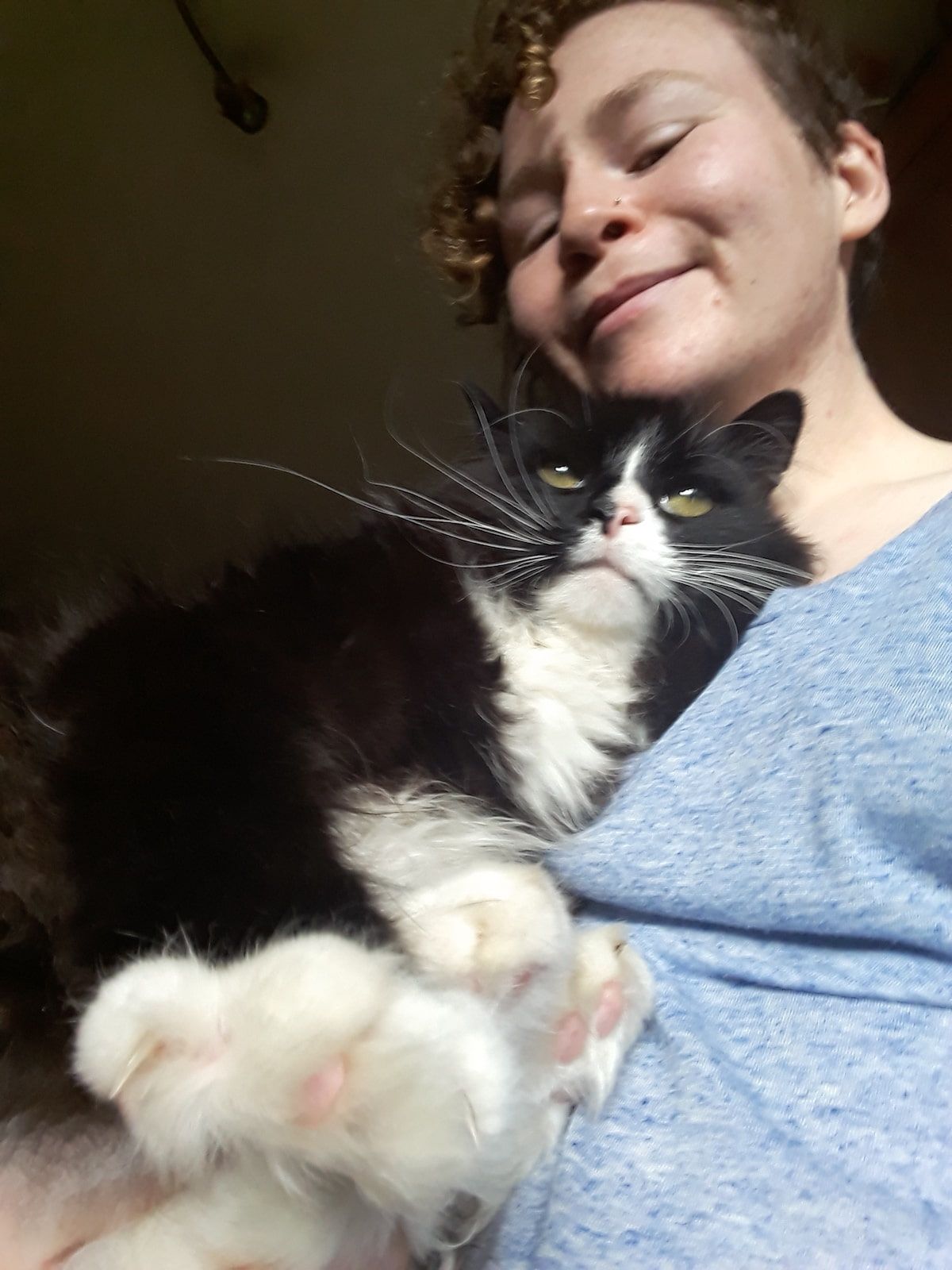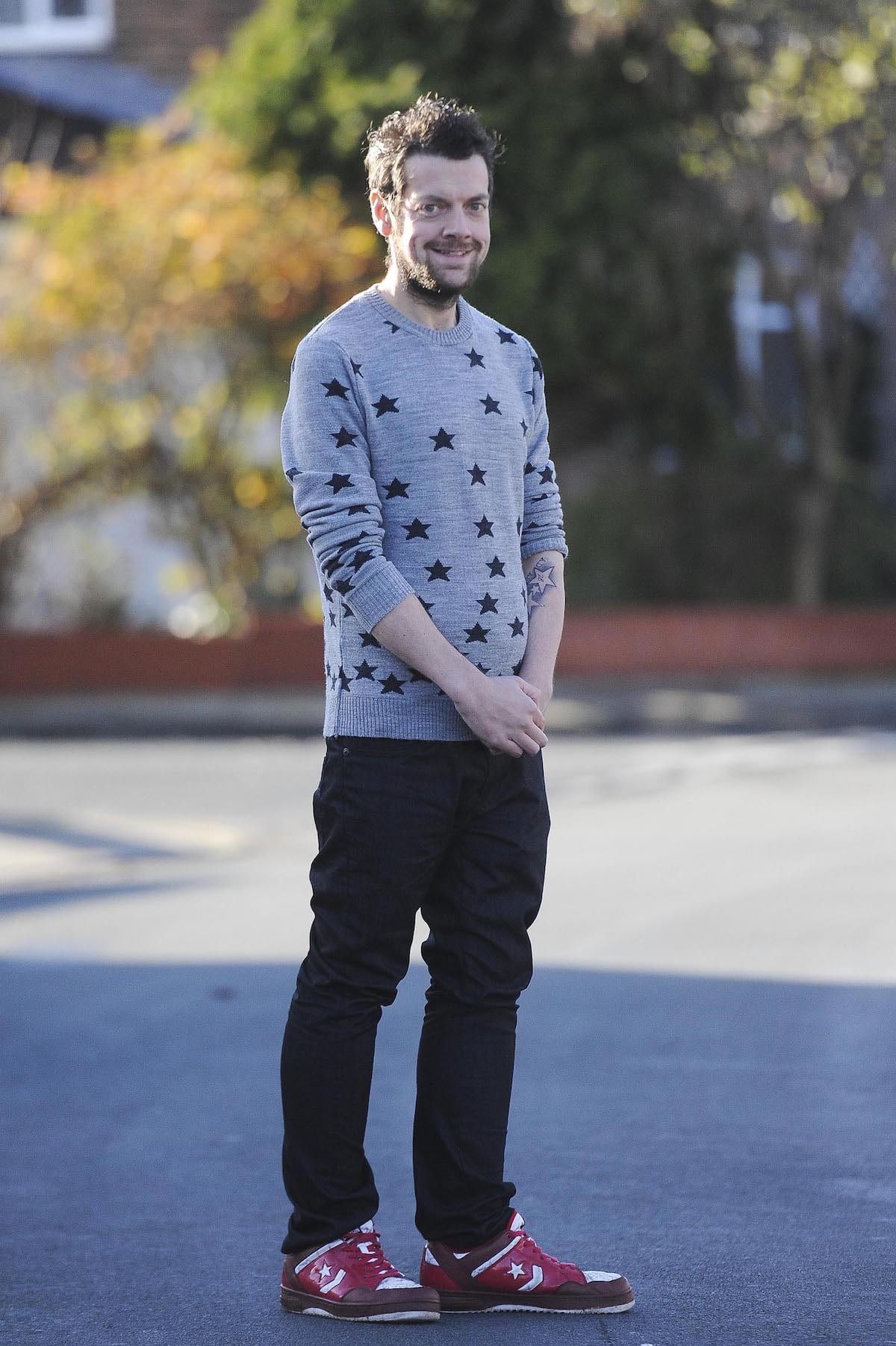There is growing evidence that the LGBT+ community may be at a higher risk of developing eating disorders, but, as Patrick discovers, detailed research and targeted help is lagging behind
Andy Butler can pinpoint the exact moment his eating disorder began. He was 13, in goal during PE at school, and got distracted. After he let the ball in, one of his classmates called him “a fat queer”.
“Everyone was so hung up about the queer thing, and I really wasn’t. I didn’t give a shit. I had already come out to my family and friends, so I wasn’t that bothered. But all I kept hearing was the word ‘fat’.”
Andy says that he now knows that he wasn’t overweight at the time, but the word lodged in his mind. He became convinced he was fat, and began obsessing over his weight.
“That was when my binge-eating disorder started,” he says. “I would starve myself all day, because I was determined I was going to diet, but then my will would be gone by the time I got home. I’d be starving, so I would eat in private upstairs. It went on from there.”
Andy’s experience with binge-eating and bulimia went on for years. Now 37, it is only recently that he has entered recovery.
“I would not say I’m cured. Sometimes, if I’ve had a bad day, the urge is there, but I’ve now got control over it, I know what to do, I know what to think. It’s easier now that I’m in a better place.”
Andy Butler
Andy is one of many LGBTQIA+ people who experience eating disorders. Beat, the eating disorders charity, says that research into this is not conclusive. But some studies suggest that members of the LGBTQIA+ community – particularly gay and bisexual men, and transgender people – might be at a higher risk than others.
A 2012 survey, which looked at 'disordered eating', found that single gay and bisexual men were more likely to report restrictive disordered eating than single straight men.
More recently, a 2015 study of more than 250,000 students in the US, published in the Journal of Adolescent Health, found that rates of self-reported eating disorders were highest in trans students, and lowest in straight men. Similarly, a 2016 study found that body dissatisfaction is “core to the distress trans people experience”, and that this dissatisfaction puts them at risk of developing eating disorders.
This is a sentiment echoed by Dr Lorna Richards, a consultant psychiatrist at the Priory Hospital, in Woking, Surrey. She says that eating disorders are “a pathological way of trying to cope with what feels like overwhelming emotions”.
“In a young person who is going through all kinds of changes, they might be overwhelmed with things such as changes in their body, changes in everyone’s expectations of them, and expectations of themselves,” she says.
The gay scene was, and still is, incredibly body-conscious. If I felt that I had a slight line of fat, I’d starve myself for a week
“At the heart of it is self-esteem. People are struggling to develop a sense of self, and to feel confident in their role or identity. If somebody has any sort of trauma before that, or if they’ve been bullied, had difficult relationships at home, or experienced any kind of abuse or neglect, it would put them in a more vulnerable position to develop an eating disorder.
“So then, if we think about the LGBT+ community, they’re going to be more vulnerable to negative experiences, whether that be bullying, or even feeling more unsure of themselves.”
Andy Butler believes that rates of eating disorders are higher in gay and bisexual men than straight men because of the emphasis on body image.
“The gay scene was, and still is, incredibly body-conscious. If I felt that I had a slight line of fat, I’d starve myself for a week. Then I’d binge uncontrollably. I was obsessed with looking as good as I could, but I couldn’t control the bingeing. So I was making up for it with a series of days of starvation, just so that I didn’t look out of place.”
Andy’s experience is different to that of 23-year-old Shauna Gavin. She first started experiencing symptoms of her eating disorder when she was 17.

Shauna Gavin
“At the time, I wouldn’t have identified as LGBTQ+, but I was completely in love with my best friend, who was the same gender as me,” she says. “I’m not sure if they’re connected, and I’ve never thought of these two parts of who I am as really having much to do with each other.”
Since then, Shauna has been on medication, seen various doctors, spent time in a psychiatric ward – and has also recognised and accepted her own sexuality.
She says that she has “never much examined” links between her sexuality and her struggle with her mental health.
“I’m sure they aren’t completely disconnected,” she says. “I think that my eating disorder stems from problems with self-esteem, body image, and other mental health problems. I actually found that becoming more accepting of my sexuality has helped me to start to accept myself more completely. This has probably had a positive effect.
“That said, the stereotypes of gay women being sexy, and my idea of what other women would be attracted to, does occasionally enter my mind, and my old cycle of thinking starts to return. I’m not sure how much this differs from the pressures that heterosexual people feel, to conform to societal beauty standards.”
Shauna says that, if she could speak directly to other young people like herself, who are experiencing eating disorders, she would urge them to seek help.
“Eating disorders are not something you should tackle alone. Try not to be too hard on yourselves, because life is tough and no two people have the same experience, so comparison is fruitless.
The stereotypes suggest that the only people who will develop eating disorders are young, white females – which certainly isn’t the case
“I would tell them to be selfish, and do everything they can to get what they need to recover, because having an eating disorder does not in anyway diminish their worth as a human.”
Rebecca Field, head of communications at Beat, says more research needs to be done into eating disorders, including into prevalence in the LGBTQIA+ community.
“We estimate that there are 1.25 million people in the UK with an eating disorder,” she says. “Some research studies suggest that up to 25% of those individuals will be male. The stereotypes suggest that the only people who will develop eating disorders are young, white females – which certainly is not the case.
“We know from the research that it takes professionals longer to diagnose men, and we imagine that fewer men come forward about their eating disorder.
“One of our ambassadors told me that during his recovery, he had never actually met a man with an eating disorder. All of the people he encountered were women, and all the examples he was told about were women. He said that was very difficult for him, because he couldn’t understand why it was happening to him.”
The experiences of LGBTQIA+ people like Andy and Shauna show that there is a strong need for more research into how eating disorders impact on the LGBTQIA+ community, and what can be done to help them, going forward.
For more information and advice on recovering from an eating disorder, visit beateatingdisorders.org.uk
Visit stonewall.org.uk to find local LGBTQIA+ services and community support groups in your area.



Comments